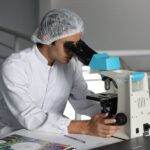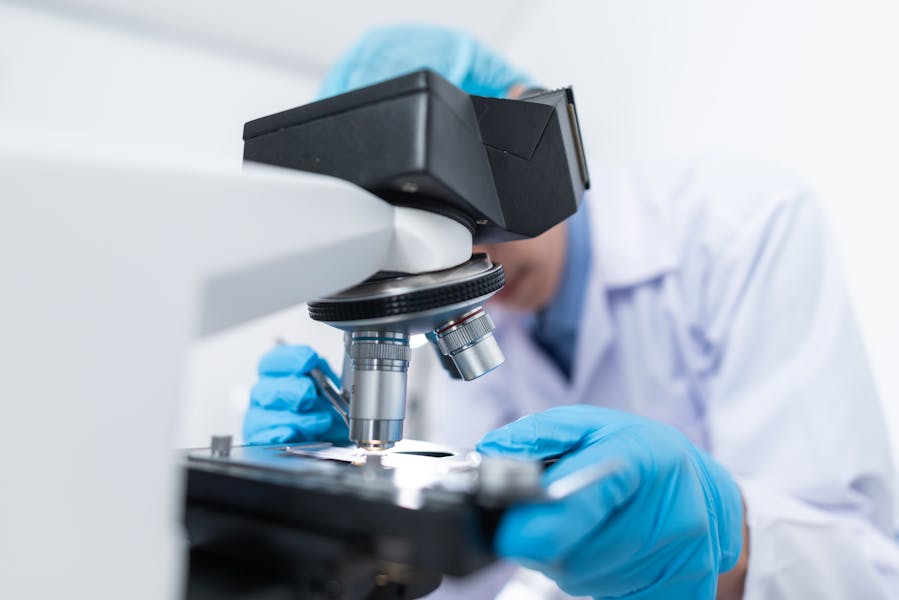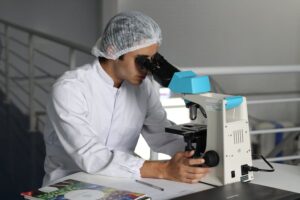Labs are important in healthcare for testing and assessing diseases. But lab technologies are always changing to get better, faster, and smarter. In recent years, there have been amazing new breakthroughs in this field.
From handheld devices that can run tests right away to machines using AI to understand results, new innovations are happening quickly. These advancements could lead to better care, finding illness earlier, and more customized treatment plans.
Let’s look at eight of the biggest new lab technologies making an impact right now.
More Portable Testing Devices
Remember having to go get vials of blood drawn and then wait days or weeks for results? That process is quickly becoming a thing of the past. Companies like KNF are creating lab equipment and compact analyzers that can check samples and provide data within minutes at a patient’s bedside or doctor’s office.
No more sending tests away to big labs – these portable devices allow convenient point-of-care testing. Doctors can get results immediately, making faster decisions about treatment. It also expands access to lab services in rural areas without nearby facilities. Portable analyzers are handheld, lightweight, and designed for simplicity so even minimally trained staff can use them properly.
Enhanced Genomic Sequencing
Understanding our genes and DNA is extremely valuable for medicine. It reveals risks for inherited conditions, guides treatment selection, and unlocks the future of personalized healthcare tailored to each patient’s unique genetic makeup. But until recently, sequencing a full genome was difficult, time-consuming, and hugely expensive.
Thanks to innovative next-generation sequencing (NGS) technology, analyzing all our genes is now faster, higher quality, and far more affordable. NGS automation allows the rapid sequencing of millions of DNA fragments in parallel instead of one by one. As costs decrease, some experts predict routine genomic profiling for every person could soon become standard practice. This wealth of genetic data will give healthcare providers powerful new insights.
Early Disease Detection Through Liquid Biopsy
Traditionally, detecting cancer and other diseases requires an invasive surgical biopsy to collect a tissue sample for examination. But now, liquid biopsies are an emerging technique to find diseases earlier by simply analyzing a patient’s blood, urine, or other bodily fluids.
The idea is that biopsies often miss things, but cancer and other illnesses shed cells and biomolecules into bodily fluids that can be biomarkers for their presence. Liquid biopsies skillfully detect and analyze these biomarkers using genomics. Compared to solid tumor biopsies, they are much less invasive, can be performed more frequently to monitor over time, and may catch diseases sooner when they are most treatable.
Lab Automation and Artificial Intelligence
Have you ever worried a medical technician might make a mistake processing your lab samples? Human errors do happen, but automation and artificial intelligence (AI) in modern labs are making the process far more reliable.
Robotic systems can be programmed to rapidly shuttle and prepare hundreds of samples with computerized quality control and zero risk of human slips. After samples are processed, AI algorithms can analyze enormous datasets, spot patterns computers are better at detecting than people, and in some cases, even interpret results or weigh in on diagnoses. Combined, lab automation and AI reduce errors while accelerating research, testing, and diagnostics.
3D Bioprinting
While still experimental, 3D bioprinting is one of the most fascinating and innovative areas in lab tech. The core concept is using modified 3D printers to fabricate artificial living tissues by strategically layering biomaterials like cells, proteins, and biomolecules.
In the future, this could allow the printing of full-scale organ replacements for transplants without relying on donors. Today, bioprinting produces realistic models for surgeon practice, drug testing, and more. For example, printing 3D human lung airways to study respiratory diseases. The potential medical uses seem endless as bioprinting capabilities rapidly evolve.
Remote Patient Monitoring
Thanks to mobile devices and high-speed internet, healthcare is becoming increasingly digitized and decentralized. Remote patient monitoring systems allow people to perform routine testing for chronic conditions right at home rather than visiting clinics or labs.
Patients can use connected devices to collect samples on their own, like sticking their fingers for a blood drop. That data is then transmitted securely to their doctor’s office for analysis. No more driving distances, taking time off work, or sitting in waiting rooms for tests that could easily be done remotely. It’s healthcare convenience meets lab testing.
Lab-on-a-Chip Technology
While it sounds like science fiction, labs are indeed being miniaturized and integrated into microchips for innovative diagnostic testing. Lab-on-a-chip (LoC) devices are tiny chips embedded with microscale components like miniaturized laboratories with pumps, filters, and detectors.
Despite their compact size, LoC chips can precisely handle, process, and analyze micro/nanofluidic volumes containing biological samples. This portable, low-cost technology could enable medical diagnosis from just about anywhere – from the battlefield to space missions and underserved regions. Some envision LoC chips being as ubiquitous as home pregnancy tests one day.
High-Resolution Imaging
Along with analyzing our genes and other biomolecules, advanced imaging capabilities that visualize samples in ultra-high resolution are transforming what’s possible in labs. Technologies like electron microscopes, mass spectrometers, and superpowered light microscopes provide stunning detail down to individual molecules and atoms.
This unprecedented level of insight is allowing scientists to study the atomic structures of cells, proteins, and other building blocks of biology more closely than ever before. Combining high-res imaging with AI and computational power takes analysis even further to accelerate discovery in medicine, bioengineering, and fundamental life sciences. Many major revelations are on the horizon thanks to these tools.
Final Thoughts
The lab technologies emerging today are incredibly exciting. They are poised to elevate healthcare with earlier and more accurate detection, smarter treatment selection, and improved efficiency. As scientific frontiers expand through interdisciplinary innovations merging fields like biology, engineering, and computing, one can’t help but wonder – what groundbreaking health lab advancements might tomorrow hold? The possibilities seem limitless for transforming medicine as we know it.





















